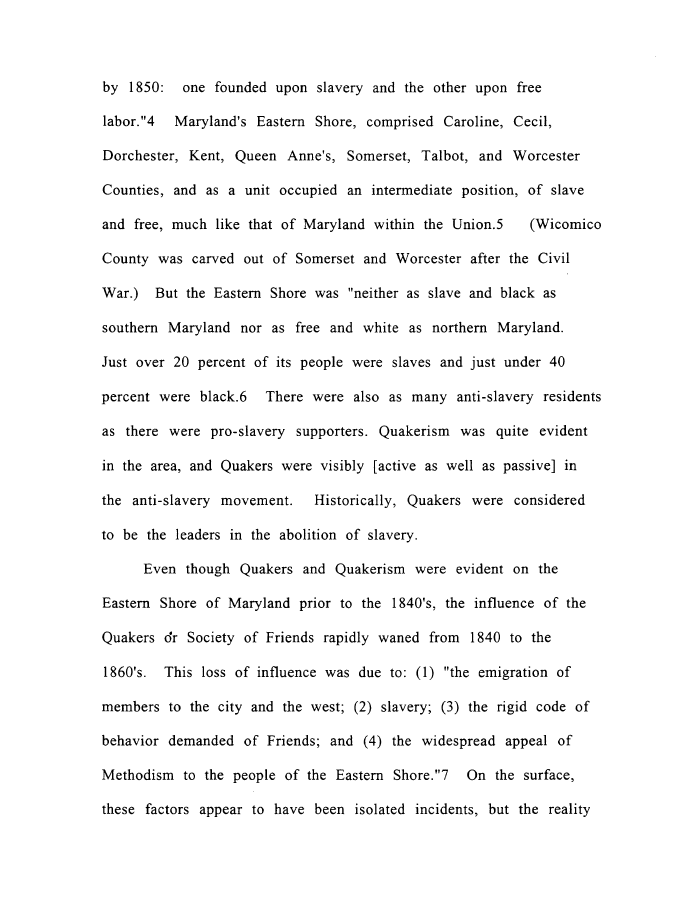 |
||||
|
TASK FORCE TO STUDY THE HISTORY AND LEGACY OF SLAVERY IN MARYLAND (Final Report) 1999/12/31 MdHR 991422 MdHR 991422, Image No: 315 Print image (44K) |
 |
||||
|
TASK FORCE TO STUDY THE HISTORY AND LEGACY OF SLAVERY IN MARYLAND (Final Report) 1999/12/31 MdHR 991422 MdHR 991422, Image No: 315 Print image (44K) |
| by 1850: one founded upon slavery and the other upon free labor.M Maryland's Eastern Shore, comprised Caroline, Cecil, Dorchester, Kent, Queen Anne's, Somerset, Talbot, and Worcester Counties, and as a unit occupied an intermediate position, of slave and free, much like that of Maryland within the Union.5 (Wicomico County was carved out of Somerset and Worcester after the Civil War.) But the Eastern Shore was "neither as slave and black as southern Maryland nor as free and white as northern Maryland. Just over 20 percent of its people were slaves and just under 40 percent were black.6 There were also as many anti-slavery residents as there were pro-slavery supporters. Quakerism was quite evident in the area, and Quakers were visibly [active as well as passive] in the anti-slavery movement. Historically, Quakers were considered to be the leaders in the abolition of slavery. Even though Quakers and Quakerism were evident on the Eastern Shore of Maryland prior to the 1840's, the influence of the Quakers o'r Society of Friends rapidly waned from 1840 to the 1860's. This loss of influence was due to: (1) "the emigration of members to the city and the west; (2) slavery; (3) the rigid code of behavior demanded of Friends; and (4) the widespread appeal of Methodism to the people of the Eastern Shore."? On the surface, these factors appear to have been isolated incidents, but the reality |